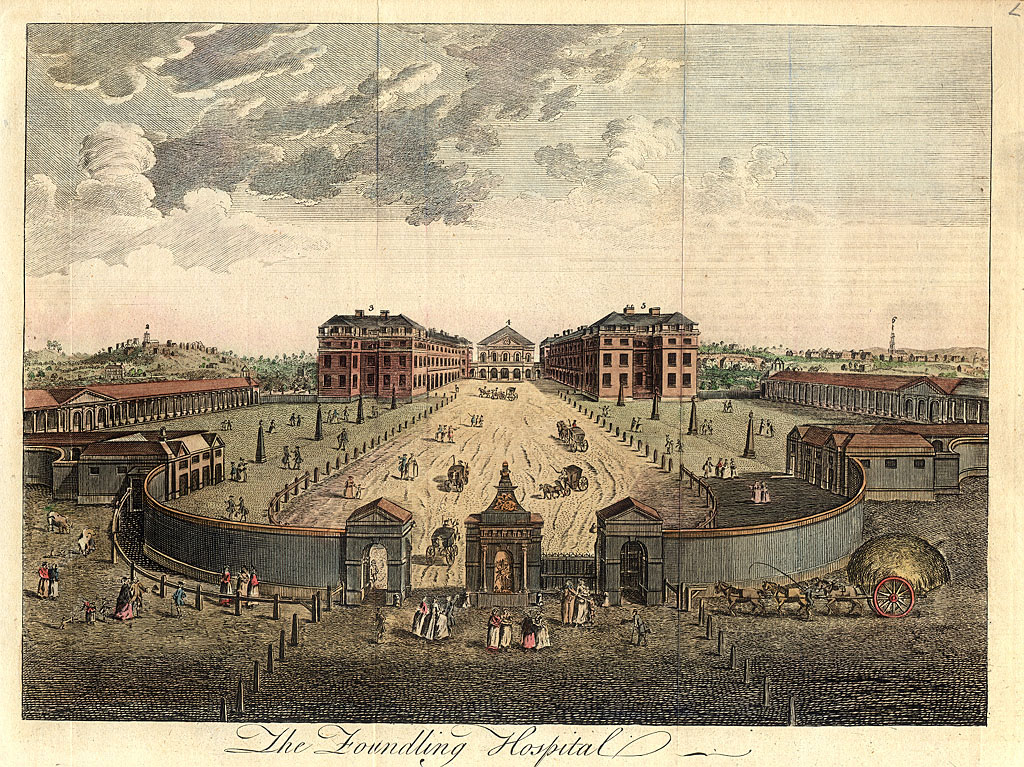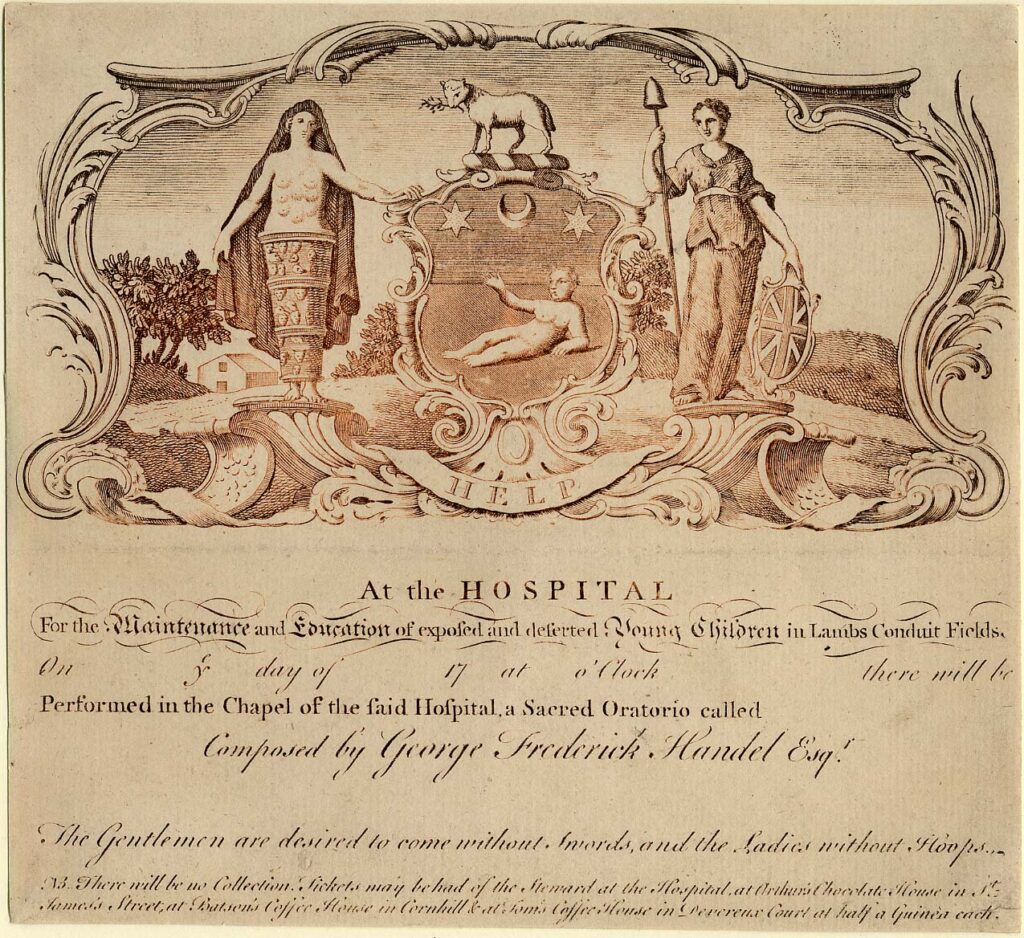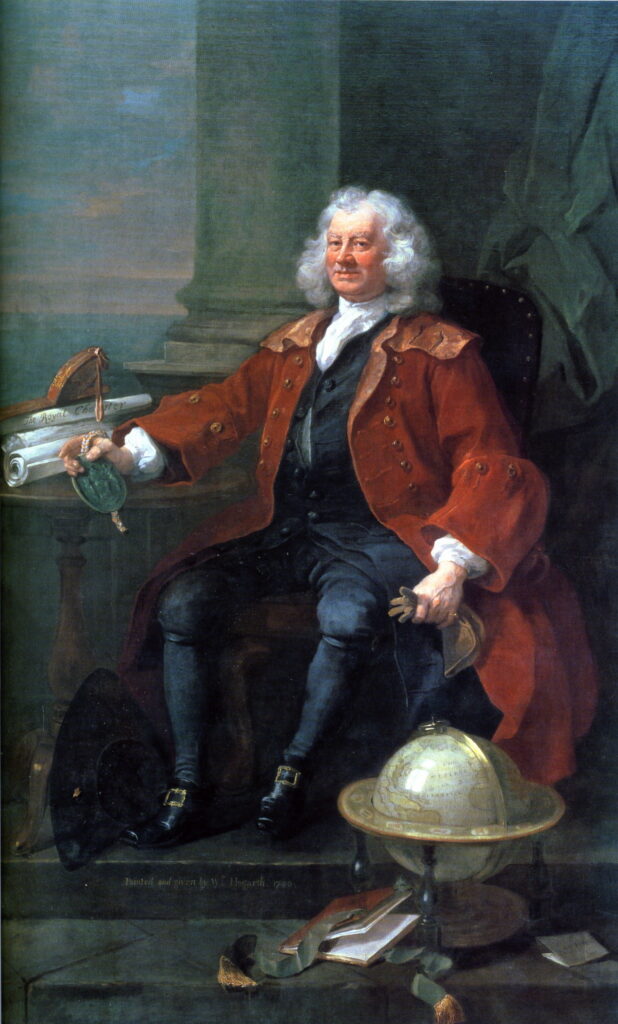London Foundling Hospital
“The Foundling Hospital in London, England was founded in 1739 by the philanthropic sea caption Thomas Coram. It was a children’s home established for the “education and maintenance of exposed and deserted young children.” The hospital was used in a more general sense than it is in the 21st century, simply indicating the institution’s “hospitality” to those less fortunate. Nevertheless, one of the top priorities of the committee at the Foundling Hospital was children’s health, as they combated smallpox, fevers, dysentery, and even infections from everyday activities like teething that drove up mortality rates and risked epidemics. With their energies focused on maintaining a disinfected environment, providing simple clothing and fare, the committee paid less attention to and spent less on developing children’s education. As a result, financial problems would hound the institution for years to come, despite the growing “fashionableness” of charities like the hospital.” –– Wikipedia

The Royal Founding Charter of the Foundling Hospital was signed by King George II in 1739. The building was designed by Theodore Jacobsen and it was constructed between 1742 and 1752 in an undeveloped area north of Great Ormond Street and west of Gray’s Inn Lane. In the meantime, children were admitted into a temporary house. Records show that from January 1, 1750 to December 1755, 2523 children were brought for admission, but 750 were taken in due to insufficient funding. After 1756, with financial support from Parliament, admissions were no longer restricted, and as many as 4000 children were taken in per year. Small children were typically sent to wet nurses in the countryside, where they stayed until 4 or 5 years old, then returned to he hospital. At the age of 16, girls were generally apprenticed as servants for four years, boys were apprenticed into a variety of occupations, typically for seven years.
The hospital was supported by many prominent people in the arts, high society, and royalty. The founding Governors and Guardians included 17 dukes, 29 earls, 6 viscounts, 20 barons, 20 baronets, 7 Privy Councillors, and the Lord Mayor of London .William Hogarth designed the children’s uniforms and the hospitals coat of arms, and set up an art exhibition in the new buildings, donating some of his own work and encouraging other artists to contribute. The hospital art collection today can be seen at the Foundling Museum. George Frederic Handel was another active supporter of the hospital, holding a benefit concert in the hospital chapel in 1749 with his composition The Founding Hospital Anthem, and an annual performance of the Messiah thereafter. In the 1920’s, the Founding Hospital moved to a new building in Berkhamsted, Herfordshire. It ceased most of its operations in the 1950s as institutionalization of children went out of fashion, and the Foundling Hospital changed its name to the Thomas Coram Foundation for Children, a charity working with vulnerable children across the UK and beyond.


“Captain Thomas Coram, horrified at the plight of unwanted children abandoned in the streets of London, established the Foundling Hospital in 1739. In this philanthropic venture, he was supported by his friend William Hogarth, who offered paintings to hang on the walls of the new institution and encouraged his fellow artists to make donations. The hope was that the wealthy would then flock to see the pictures, and take pity on the foundlings. Hogarth’s plan proved a great success, and Captain Coram soon collected works by the leading British artists of the day, as well notable foreigners such as Andrea Casali and John Rysbrack. Thus, the Foundling Hospital was effectively the country’s first public gallery, predating Dulwich Picture Gallery (1813) and the National Gallery (1824). Musicians, as well as artists, also offered their support. Handel composed a special anthem, performed concerts, donated an organ and bequeathed his copy of the Messiah.” — The Art Newspaper.Com

See also:
- “An account of the hospital for the maintenance and education of exposed and deserted young children…” 1749.
- Foundling Hospital (Wikipedia)
- Foundling Museum (Wikipedia)
- The Foundling Museum (London)
- Foundling Hospital (BBC)
- Foundling Hospital – London Ancestor (etching)
- History of the Foundling Hospital (Coram Charities)
- About Handel’s Messiah (americanbach.org)
Last Updated on 10/20/24